World Guides Travel Blog
September 2012
This is where we let you know all about what's going on with our website and the world of travel, with destination reviews, current travel news and topical travel-related stuff to discuss with your friends. Please let us know if you want to comment on anything -
Contact us.
September 29, 2012
LIGHTING UP A NORTHERN AUTUMN
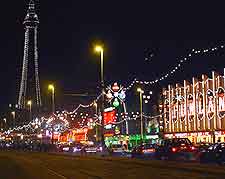
As a child growing up not a million miles from the northern British seaside resort of
Blackpool, a trip to see the famous illuminations was part of the annual calendar. It was the highlight of the year.
This year, I've discovered, the illuminations are celebrating their 100th birthday. Once again, they are lighting up the town for a grand total of 66 nights. Millions come each year to admire the town's 6-mile / 10-km long show and the million or so light bulbs that make up the individual displays.
Apparently, the whole autumn illuminations ritual began as a way of extending Blackpool's summer season. Back in those early years, Blackpool's 'artificial sunshine', as the new-fangled electric light bulbs came to be known - understandably caused quite a stir. In 1912, when the first real Blackpool Illuminations were staged, 10,000 bulbs were used. Spectators were so impressed, they asked for the same show the next year, and the event continued year after year.
It is amazing that all these years later, the Blackpool Illuminations seem to be going just a strong, especially if you take into account the various setbacks to British seaside tourism and the rise of other forms of less traditional evening entertainment now available to holidaymakers and locals. Come October half-term school holidays, you can be pretty sure that there'll be barely a spare room to be had in town.
Of course, how much longer the 'Greatest Free Show on Earth' can carry on remains to be seen, especially in these cash-strapped times. Even though the illuminations now use energy-saving bulbs and wind turbines, they still cost over £2 million pounds each year. One thing's for sure, Blackpool without its autumn light show just wouldn't be the same.
Posted by Sue at 13:10:10 on 29/9/2012
September 24, 2012
LIFE ON THE OCEAN WAVE
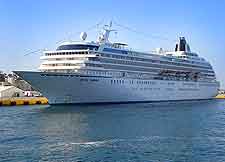
The last time I went on a cruise was in 1983. The ship left Leningrad, as it was then called, with a swimming pool full of logs and a roster of passengers relieved to have made it through strict Communist customs without a hitch. I recall spending the entire trip watching obscure Russian films or playing quoits on deck. The menu was varied, but seemed to involve a lot of cucumber and beetroot. Vodka was easier to come by than a glass of water. Many days later, or so it seemed, we docked in Tilbury near
London.
Over the years, my one-and-only cruising experience has been coated with a rosy-tinted veneer. Which means that every now and then, I'm tempted to try my hand at another one. I'll catch a glimpse of an advert on television showing a vast floating hotel sailing past palm-tree lined islands. Happy guests peer over the top of infinity pools or surf artificial waves. I've seen pictures of cruise ships floating incongruously through the Venice Lagoon, within a hair's breadth of the city's most iconic landmark, St. Mark's Basilica.
So far, I've not confessed my desire to have another go at life on the ocean wave to the rest of the family. I really can't imagine that they'll be taken with the idea. Recently, though, I discovered the perfect compromise - a cruise ship that has the Northern Irish port of
Belfast as its ultimate destination. By all accounts, the number of cruise ships docking in the city has rocketed in recent years. True, there isn't a palm tree in sight and the weather in the Irish Sea might not be conducive to open-air swimming. A chance to visit the newly opened and much-acclaimed Titanic Visitor Centre would be in the offing, though. I'm tempted.
Posted by Sue at 14:14:08 on 24/9/2012
September 16, 2012
LONDON ON FOOT
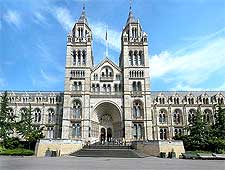
I have to confess that, whenever we've visited
London before, we've headed straight underground, only popping up to pavement level every now and then to admire some tourist attraction or other before descending mole-like once again into the bowels of the city . We've barely had time to breath in a lungful of fresh open air. Last weekend, though, on a family day out in London we decided to approach it from a different angle - on foot.
Well, not entirely on foot. We did take the tube from Paddington Station to South Kensington to get the ball rolling. From there, we emerged into the late summer sunshine - which turned out to be unseasonably hot - and walked the short distance to the National History Museum. Free to enter, we wandered its cool corridors, inspected insect and dinosaur life in its many forms, had our photo taken with a dodo or two, and experienced a few seconds in a simulated Japanese earthquake.
Clutching a map of London, we discovered that just down the road from the Natural History Museum is the Royal Geographical Society headquarters, with its statue of the Antarctic explorer Ernest Shackleton. Then came the open green spaces of Hyde Park, and the pedalo-covered Serpentine Lake and nearby Rotten Row. Buckingham Palace appeared as if by magic, with glimpses of The Mall all set up for the finish of the Paralympic Games Wheelchair Marathon event the following day. Along Birdcage Walk, we stopped to admire the greenery of St. James's Park.
A quick stop for photos in front of Big Ben and a peep over the railings into the courtyard of Westminster Palace and we found ourselves crossing windswept Westminster Bridge, with close-up views of the London Eye. From there it took a bit of backstreet negotiation to find ourselves at the Imperial War Museum, another free-to-enter museum where we wandered more cool corridors, inspected military vehicles and ephemera in their many forms, and experienced ten minutes in a simulated London Blitz air-raid shelter.
An impending train departure left us scuttling for the steps of Lambeth North tube station, where we were able to take the weight of our feet as we whizzed along the Bakerloo line. Time enough, too, to contemplate what other iconic above-ground sights we were missing.
Posted by Sue at 11:04:48 on 16/9/2012
September 7, 2012
WHAT A DIFFERENCE A MONTH MAKES
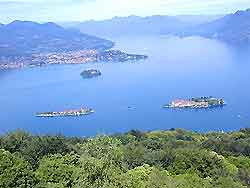
The arrival of September seems to have driven various retired friends of mine to trawl the online travel websites with added vigour. With my summer holiday already a distant memory, I'm a touch envious. September sounds like the perfect time to head away in search of some late-summer sun, particularly after all the unseasonal rain we've had.
What a difference a month makes. In high summer, there are places you would be wise to avoid. Many years ago, I visited the Italian city of
Florence in the middle of August and swore that I'd never do it again - at least not on such a squeezed budget. Those crowds, and that heat!
Come September, though, prices suddenly slide back to more acceptable levels. Sensibly timed flights are no longer fully booked. The seas are still warm and the beaches considerably less crowded. Daytime temperatures are good for taking a stroll without the need to carry a serious quantity of bottled water. The evenings are still relatively balmy enough to enjoy al fresco suppers. Even the insect life seems to calm down.
I suspect, that as soon as the kids have flown the coop, I too will be glued to the holiday brochures in search of a late summer holiday adventures. I imagine myself lounging on the beach on a less-crowded Côte d'Azur, or exploring village life on some Mediterranean island or other. I may even find myself watching the sun set over Lake Maggiore in
Italy. All in all, I'm pretty sure that September will become my favourite month.
Posted by Sue at 19:10:29 on 7/9/2012
September 1, 2012
A FORGOTTEN CORNER OF ENGLAND
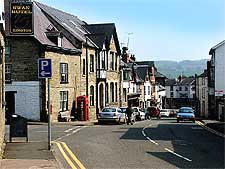
This summer holiday, we inadvertently stumbled across a forgotten corner of
England. It took me by surprise because, truth be told, I didn't think there were any of them left. I started to suspect that our holiday destination was perhaps a little unusual when we told friends and family that, this year, we'd be heading to Herefordshire for a week of rest and relaxation. We'd booked a cottage in the middle of nowhere, or at least quite near to a town called Kington. Some looked puzzled, others bemused.
We weren't disappointed. A gentle walk from the cottage through country lanes delivered us safely into the quiet border town of Kington, which turned out to be a forgotten corner of a forgotten county. The shops had an old fashioned feel, and the people we met greeted us with the enthusiasm of old friends. We browsed idly through the treasures of a second-hand bookshop, we stopped to buy new boots at the gentleman's outfitters, and we chatted with the greengrocer as he weighed out a big bag of potatoes, the soil still damp from the morning's digging. It was like going back in time - in a good way, of course.
From the cottage's windows, there were fine views of the Hergest Ridge and Offa's Dyke Path, and green fields dotted with more sheep than even a self-confessed insomniac could ever get round to counting. A walk along the Ridge to the tiny village of Gladestry revealed an impromptu tearoom set up in the old Post Office, open only on Mondays. We were greeted by a lady named Sue, a plateful of homemade cakes and a pot of tea. Thank goodness it was Monday.
Posted by at 19:11:12 on 01/9/2012
 As a child growing up not a million miles from the northern British seaside resort of Blackpool, a trip to see the famous illuminations was part of the annual calendar. It was the highlight of the year.
As a child growing up not a million miles from the northern British seaside resort of Blackpool, a trip to see the famous illuminations was part of the annual calendar. It was the highlight of the year. The last time I went on a cruise was in 1983. The ship left Leningrad, as it was then called, with a swimming pool full of logs and a roster of passengers relieved to have made it through strict Communist customs without a hitch. I recall spending the entire trip watching obscure Russian films or playing quoits on deck. The menu was varied, but seemed to involve a lot of cucumber and beetroot. Vodka was easier to come by than a glass of water. Many days later, or so it seemed, we docked in Tilbury near London.
The last time I went on a cruise was in 1983. The ship left Leningrad, as it was then called, with a swimming pool full of logs and a roster of passengers relieved to have made it through strict Communist customs without a hitch. I recall spending the entire trip watching obscure Russian films or playing quoits on deck. The menu was varied, but seemed to involve a lot of cucumber and beetroot. Vodka was easier to come by than a glass of water. Many days later, or so it seemed, we docked in Tilbury near London. I have to confess that, whenever we've visited London before, we've headed straight underground, only popping up to pavement level every now and then to admire some tourist attraction or other before descending mole-like once again into the bowels of the city . We've barely had time to breath in a lungful of fresh open air. Last weekend, though, on a family day out in London we decided to approach it from a different angle - on foot.
I have to confess that, whenever we've visited London before, we've headed straight underground, only popping up to pavement level every now and then to admire some tourist attraction or other before descending mole-like once again into the bowels of the city . We've barely had time to breath in a lungful of fresh open air. Last weekend, though, on a family day out in London we decided to approach it from a different angle - on foot. The arrival of September seems to have driven various retired friends of mine to trawl the online travel websites with added vigour. With my summer holiday already a distant memory, I'm a touch envious. September sounds like the perfect time to head away in search of some late-summer sun, particularly after all the unseasonal rain we've had.
The arrival of September seems to have driven various retired friends of mine to trawl the online travel websites with added vigour. With my summer holiday already a distant memory, I'm a touch envious. September sounds like the perfect time to head away in search of some late-summer sun, particularly after all the unseasonal rain we've had. This summer holiday, we inadvertently stumbled across a forgotten corner of England. It took me by surprise because, truth be told, I didn't think there were any of them left. I started to suspect that our holiday destination was perhaps a little unusual when we told friends and family that, this year, we'd be heading to Herefordshire for a week of rest and relaxation. We'd booked a cottage in the middle of nowhere, or at least quite near to a town called Kington. Some looked puzzled, others bemused.
This summer holiday, we inadvertently stumbled across a forgotten corner of England. It took me by surprise because, truth be told, I didn't think there were any of them left. I started to suspect that our holiday destination was perhaps a little unusual when we told friends and family that, this year, we'd be heading to Herefordshire for a week of rest and relaxation. We'd booked a cottage in the middle of nowhere, or at least quite near to a town called Kington. Some looked puzzled, others bemused.